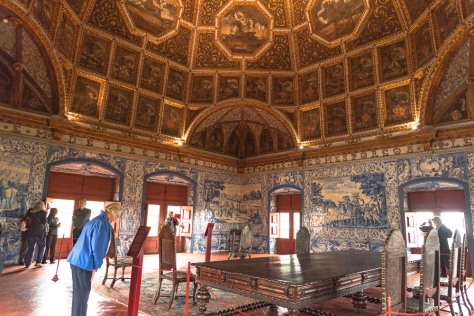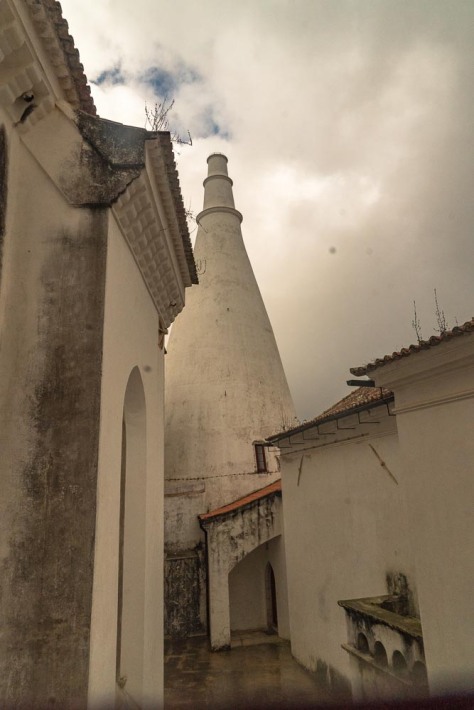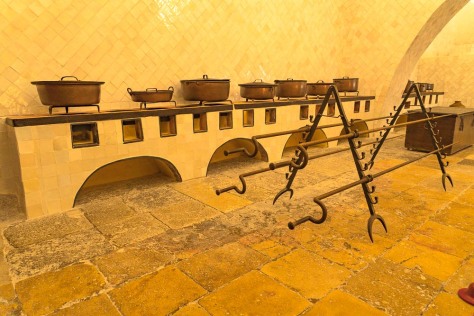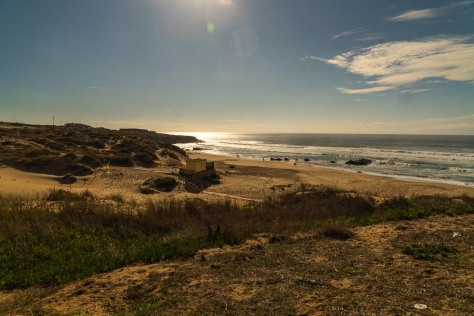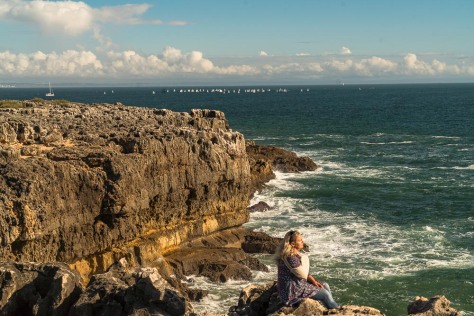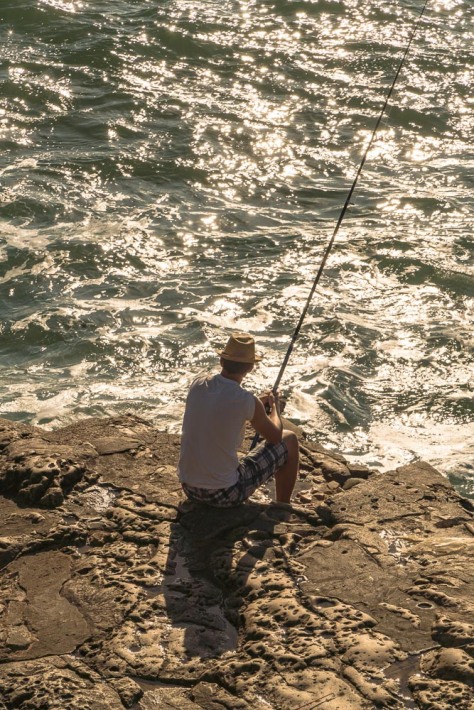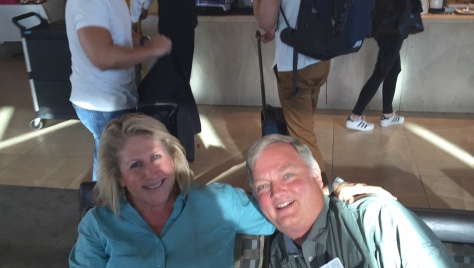October 30, 2016:
After 2 days at sea, sailing down the west coast of Africa (and pinching ourselves with the marvel of it), we came into the Cape Verde Islands on the island of Saō Vicente (and docked in the port of Porto Grande) this morning.
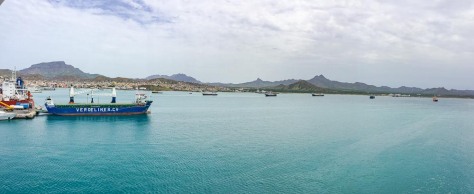




But first, many of you wonder how we can stand the large number of days we have at sea between many of our ports. Let us assure you; it’s no hardship at all! We usually rise at a decent hour, and go down to the formal dining room for a sit down breakfast served precisely to our choice. If we want, there’s always a Canyon Ranch approved spa menu, but there is no lack of other choices. Our ship was extensively renovated this year, and one of the best improvements was a considerable upgrade to the ship’s satellite WiFi capability, which is what is making these posts possible. This upgrade also allows us to get MSNBC in our room, so we can stay up to date on the insanity of this year’s election.
After breakfast and a little telly, there is a Smithsonian lecturer aboard who presents a different lecture every day at sea. The theme this cruise is a series on the lives and contributions of numerous explorers, and the lectures are really fascinating! We usually follow that by an hour walking around deck while we listen to some of our favorite podcasts. There are also many other activities such as wine tasting, bridge games and lessons, dance lessons, a casino, and a Canyon Ranch Spa, and full exercise facility with occasional classes. Truthfully, I usually spend some time on deck with Jim, but mostly spend my time editing photos and writing blog posts while watching the waves go by.
Now, onto the country of Cape Verde. That’s right; it’s a separate country, having enjoyed its independence since 1975. The country consists of 10 islands about 500 miles off the coast of Africa. A former Portuguese colony, Portuguese remains its primary language, although the natives also speak a form of Creole which is Portuguese-based. Originally having fought Portugal for its independence with the help of another former Portuguese colony; Guinea Bissau. Originally, Cape Verde and Guinea Bissau formed a joint country, but in 1991, Cape Verde broke away peacefully to form its own country, largely because the Cape Verdeans felt the corruption in Guinea Bissau threatened their country’s democratic practices and traditions.
Jim and I were really impressed with not only the extremely strong democratic history of Cape Verde (the African nations confederacy uses its citizens as poll watchers in other countries to try to assure fair elections in those other countries), but at all they have achieved since declaring independence. Make no mistake, this is an incredibly poor country with virtually no natural resources. Our tour guide told us the only resources Cape Verde has are the sun and the wind! However, since independence, the Cape Verdean people have gone from a literacy rate of about 60% to a literacy rate of 95%. With a population of just about 500,000 (with over 600,000 expat Cape Verdeans), about 66% of its population still living in the islands is under 25 years of age. While unemployment remains high at about 23%, education is hugely subsidized by the government and several universities exist in the islands. For example, our tour guide is employed as a mechanical engineer at the national electrical plant during the week, but gives tours to supplement his income on the weekends.
Everything the Cape Verdean government does seems to be directed at preventing greater ills. Accordingly, medical care is widely available and very highly subsidized with all preventive care not just covered, but actively encouraged. This results in an infant mortality rate of just 1 in 100 births. Likewise, seeing the ravages wrought by HIV throughout the rest of Africa, Cape Verde has maintained an AIDs infection rate of just 1% through an active campaign of education, condom distribution and free AIDs treatment. Social Security is provided beginning at age 65, and we saw a new affordable housing project whereby the unemployed or underemployed can pay a small amount according to ability. The complex was beautiful and modern, and included a health clinic and a school.
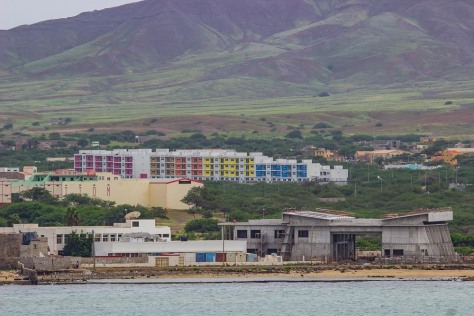
OK; enough statistics, let’s get on with the tour. Jim and I signed up for a tour which consisted of a bus tour around most of the island with stops at the scenic highlights. As we drove into the town of Mindelo, we could see evidence of its colonial past with beautiful pastel-colored colonial architecture. We drove past the African market, but most of the stalls were closed because it is Sunday. It was also fun to see some had decorated for Halloween, which our guide tells us is a big excuse to party.






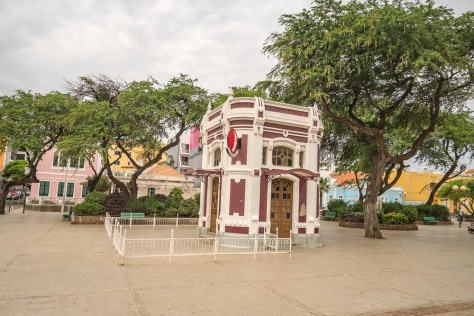
Cape Verde is also part of the volcanic chain formed by the eastern Atlantic tectonic plate. The islands appear older here, in that the volcanic peaks appear more eroded an a slightly lighter shade of blackish brown. We are fortunate to be stopping here at this time of year, though, as the rainy season has begun and the whole island appears green with low vegetation, and everyone seems to have planted a corn crop wherever they could scrape out a small plot of land. None of this farming is mechanized, and you see the people all carrying hand tools to tend their small crops in the incredibly rocky soil. About the only trees that appear to grow in the inland of the island are small shrubby acacias. While palms and tropical fruit trees dot areas along the inhabited parts of town, not many other trees grow outside the villages.


Our first stop is up a cobblestoned road to the highest peak on the island, Monte Verde. The views are very beautiful, and we can see our ship anchored in Porto Grande.





Our next stop is at a place called Catfish Bay, and we can see the influence of the many foreign visitors and Cape Verdean expats who own homes near the beach here. Apparently, this is a favored tourist destination for the huge music festival they hold on a huge stage on the beach the weekend of the full moon. Many expat Cape Verdeans time their summer vacations so they can attend this party.





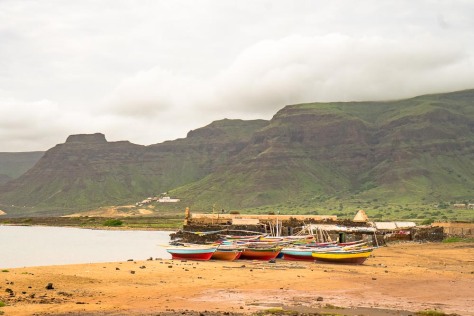
We then drove along the coast and started noticing white sand beaches and dunes. Our guide explained that since this a windward island, the sands from the Sahara blow over 500 miles to get here and are trapped by the high volcanic mountains so they drop onto the beach here. Our next stop is at Praia Grande, which is a popular destination for the island residents because of the white sands which have accumulated here. We celebrated our walk on the beach by trying a shot of the local liquor distilled here called grogue, made from sugar cane. It mostly tasted like really astringent rum. We were not compelled to rush out and order a cocktail made with the stuff!











Finally, our tour stopped in an agricultural valley which is fed by a stream which eventually empties into the Atlantic, but it appeared what stream there was ran underground because all the crops in this valley were supplied by windmill-operated pumps. Although the Cape Verde islands were discovered by Portugal in 1462, it wasn’t really developed at all until the 19th century because of the lack of water. However, the town of Mindel was formed in 1795 because its natural harbor provided a safe berth, and it became a coal depot for Atlantic steam ships starting in the 19th century.



We then returned to the ship, and prepared to cast off for Dakar, Senegal. We can’t wait to see what it holds for us!







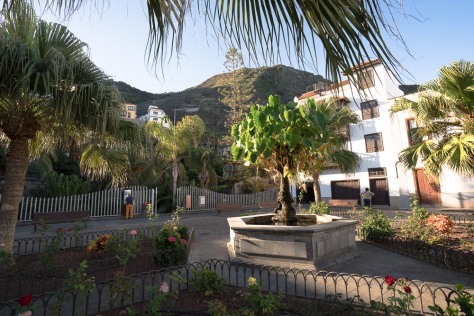


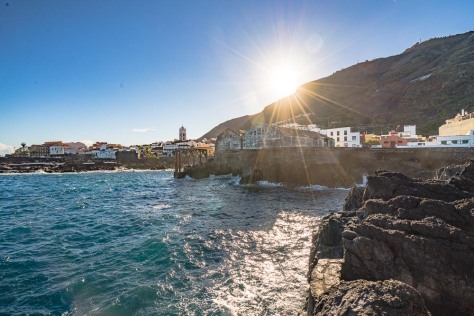


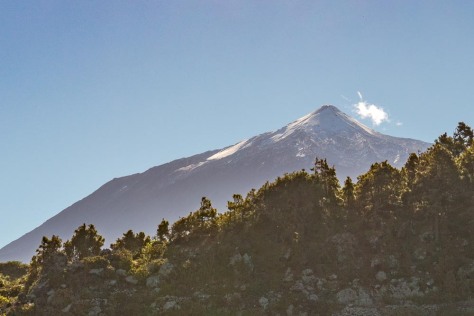
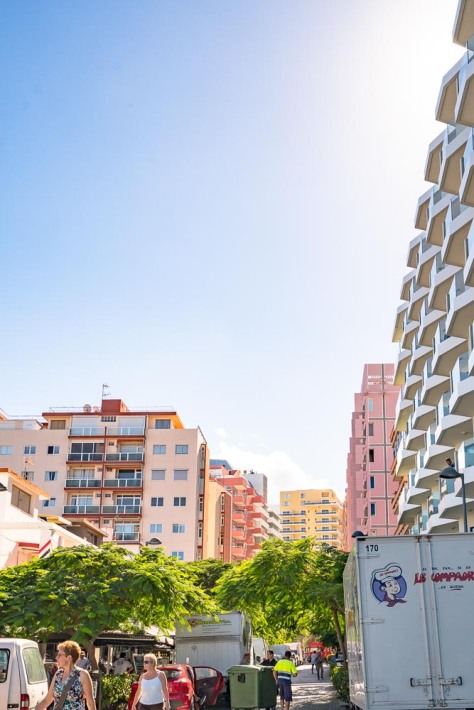

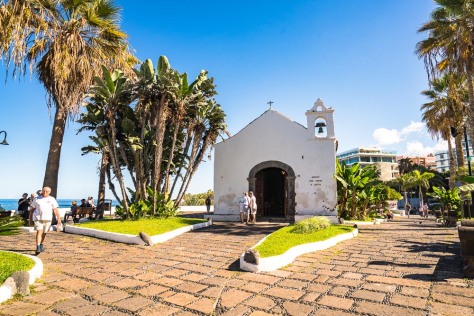



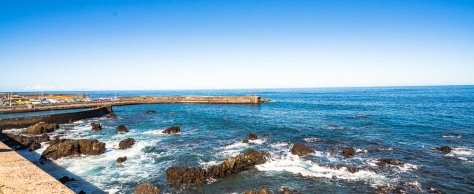

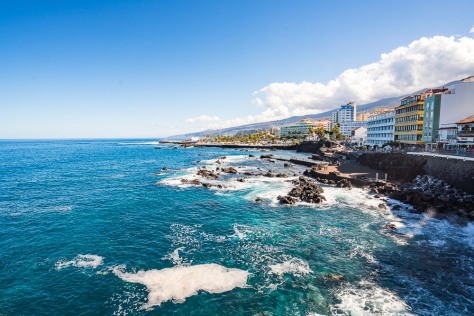



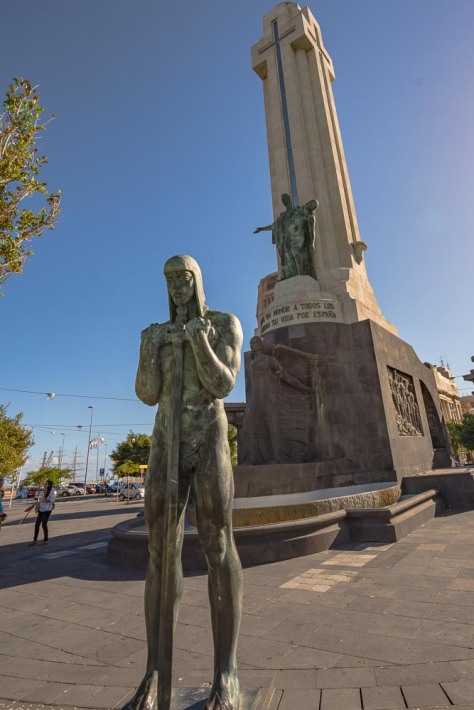


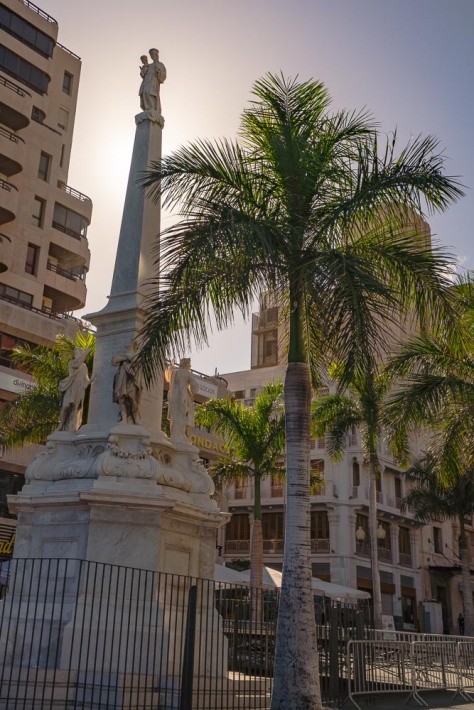






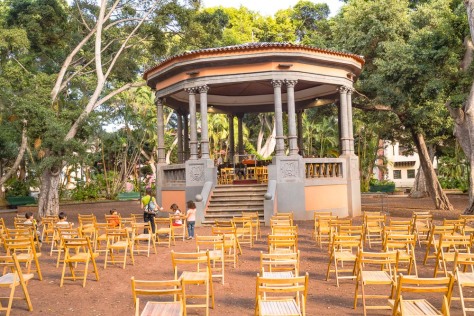


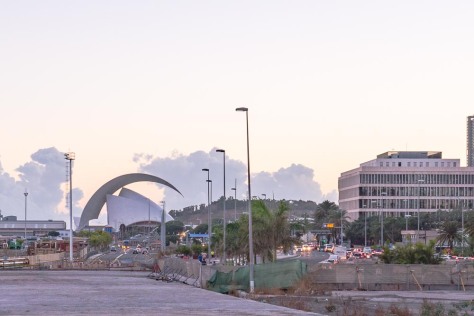


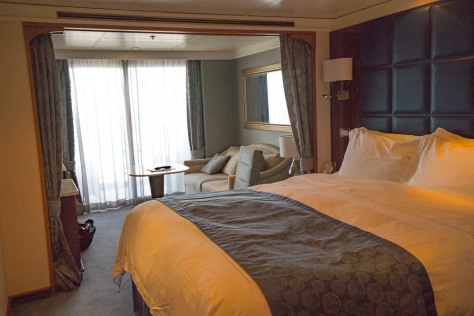


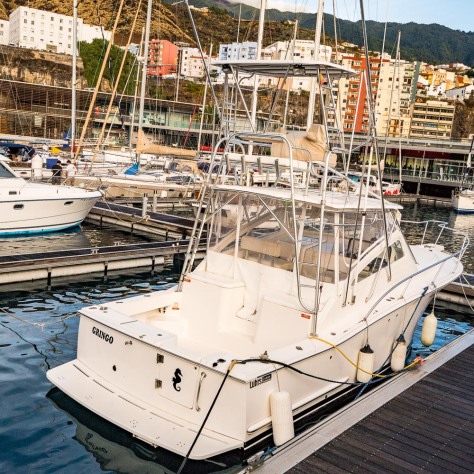










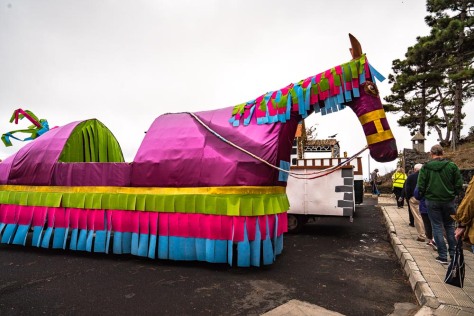
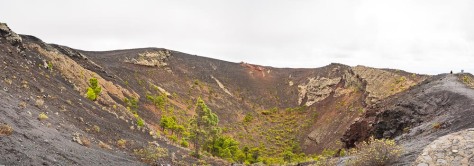












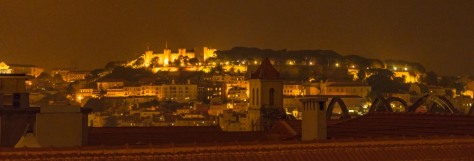





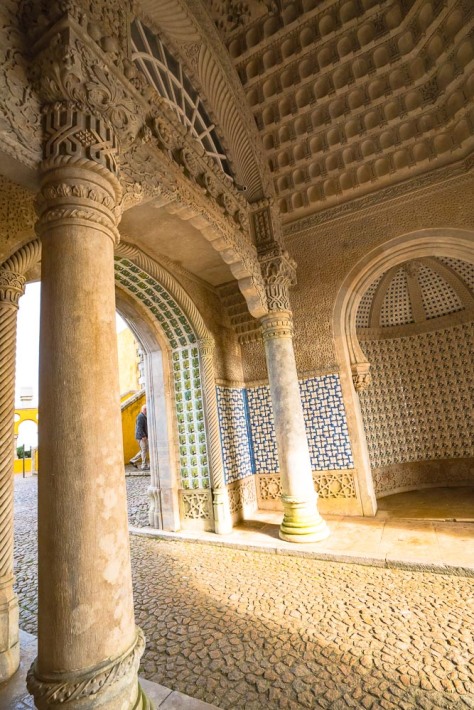 Then there is the Triton gate, crowned by its archway which looks like a coral reef!
Then there is the Triton gate, crowned by its archway which looks like a coral reef!


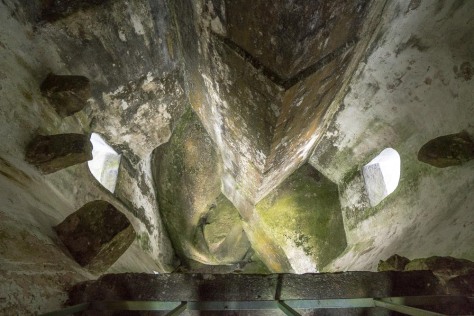



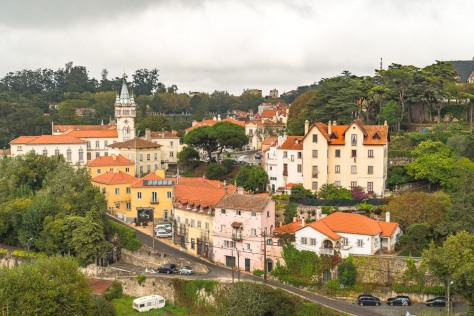

 The National Palace is more reminiscent of a hunting lodge, and our guide, Elsa, told us that it was considered to be the “man cave” of the Portuguese nobility. In fact, Portugal’s penultimate king, Carlos, kept both his wife and his mistress ensconced in different parts of the house. I thought the most interesting feature of the palace were the immense chimneys in the kitchens which looked like giant dunce caps, but allowed for huge spits to operate over raging fires set on the floor of the kitchen.
The National Palace is more reminiscent of a hunting lodge, and our guide, Elsa, told us that it was considered to be the “man cave” of the Portuguese nobility. In fact, Portugal’s penultimate king, Carlos, kept both his wife and his mistress ensconced in different parts of the house. I thought the most interesting feature of the palace were the immense chimneys in the kitchens which looked like giant dunce caps, but allowed for huge spits to operate over raging fires set on the floor of the kitchen.
